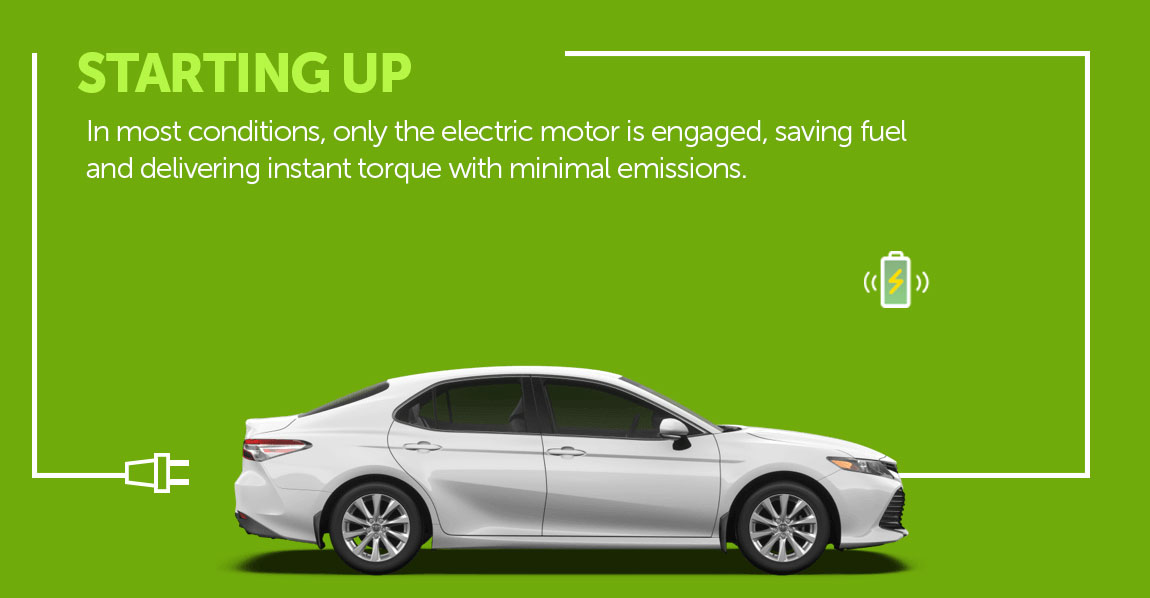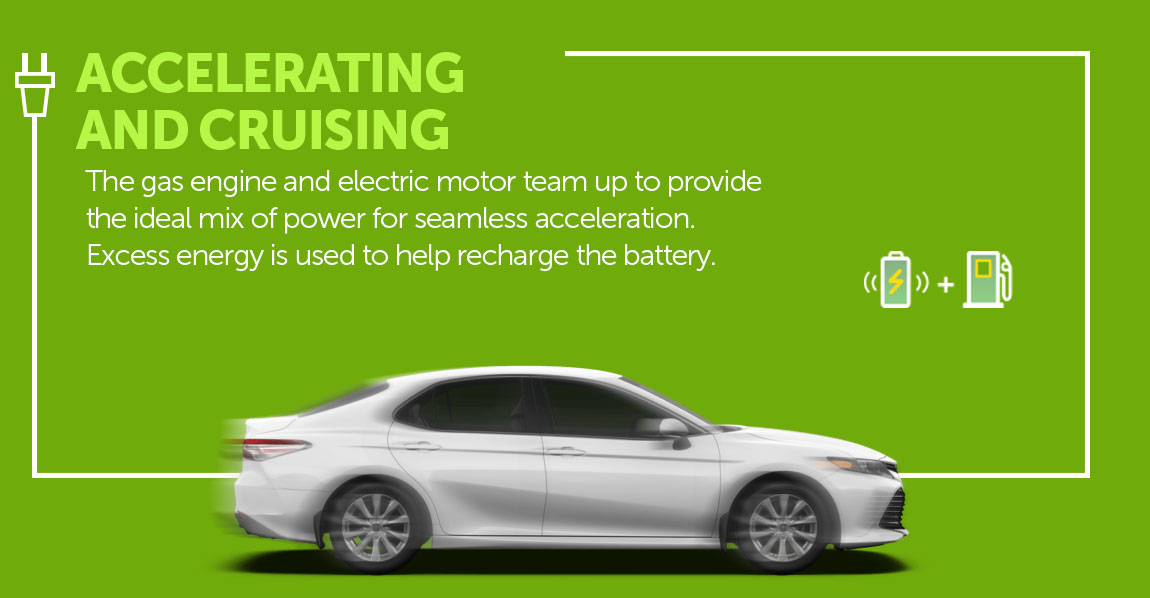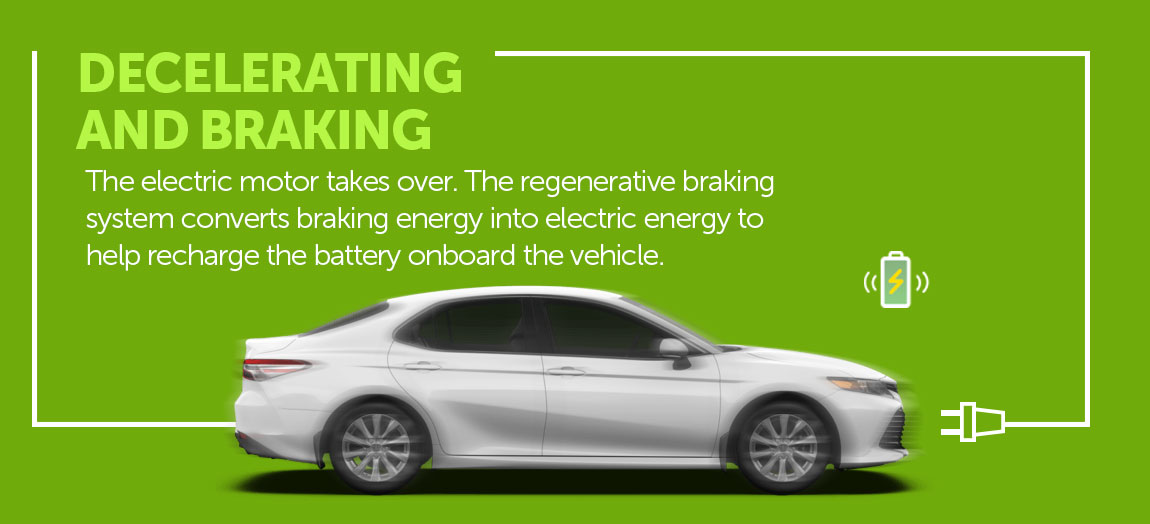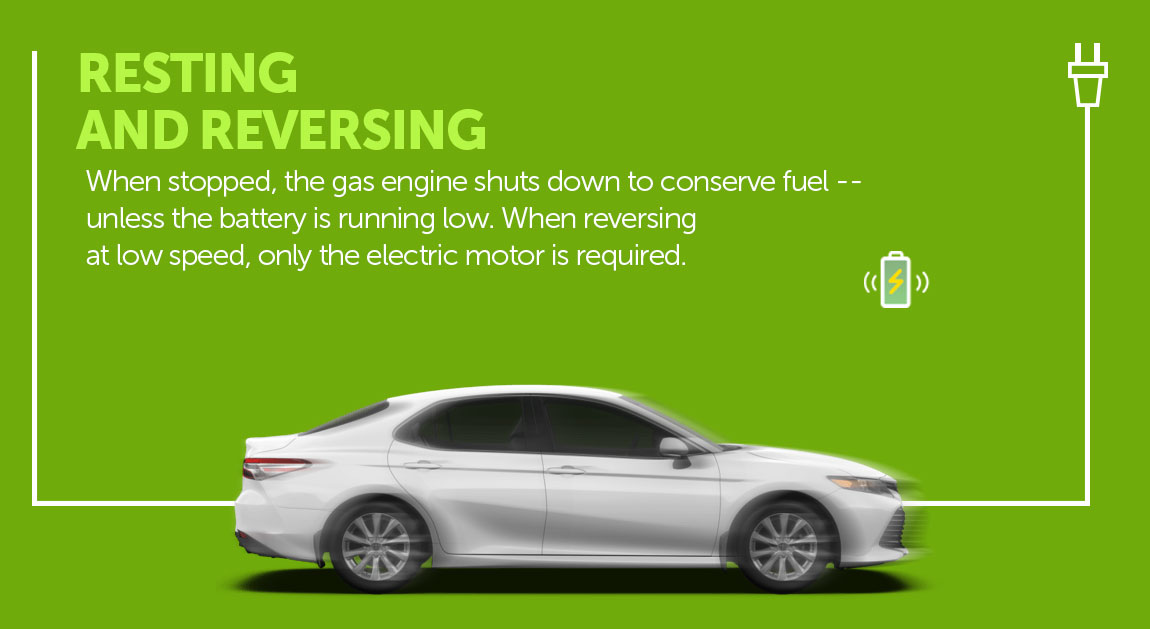



IN SHORT
Toyota hybrid vehicles can function in all transparency in 100% electric mode, in gas mode, or a combination which uses hybridization. Everything happens automatically, without the intervention of the driver. The result? A propeller group which produces 70% less emissions than conventional gas or diesel engines. Without any sacrifice in terms of performance and without having to plug the vehicle.
Since 1997, drivers benefit of a better fuel economy, reduced exploitation costs and an unmatched level of comfort and refinement thanks to Toyota’s hybrid technology. Today, Toyota’s range of hybrid vehicles includes small hybrid cars, such as the hybrid Toyota Yaris and more family-oriented cars such as the Toyota Camry, the Toyota Prius, Prius Prime and Prius C, as well as the brand new hybrid Toyota Corolla. But have you ever wondered how hybrid cars work? Continue reading to discover what Toyota’s hybrid Synergy Drive system exactly is, its functioning and its advantages for the environment and your wallet.
WHAT IS A HYBRID VEHICLE?
In simple terms, a hybrid vehicle is a vehicle with two energy sources or more. Most hybrid road cars use a normal internal combustion engine paired with an electric engine, but their combination means there are many types of hybrid configurations.
Starting with the original Prius, Toyota launched the complete hybrid system, which uses two distinct engine groups – a battery-fueled electric engine and a fuel-generated combustion engine – able to work together to drive the vehicle or each on their own. It is the most popular hybrid system in the world and more than 12 million units have been sold since the launch of the Prius in Japan in August of 1997.
The second hybrid type is called “parallel”. It uses a normal combustion engine as principal source of energy, with an electric engine installed between the engine and the transmission to provide assistance. This disposition tends to be more restraint than a complete hybrid, and the installation of an electric engine in a very small space also limits its power and EV reach (electric vehicle)
Finally, the third hybrid variant is the “series” type. In this type of vehicle, the electric engine ensures all the driving. The normal combustion engine is not connected to the transmission and functions instead as a generator to feed the electric engine. The main obstacle for a series hybrid is to maintain its efficiency once the battery is depleted and, for this reason, “series” hybrids are rare.HOW DOES THE SYNERGY DRIVE SYSTEM WORK?
Toyota’s Synergy Drive hybrid system consists of six main components: a gasoline engine, an electric motor, an electric generator, a power control unit and a power sharing device that uses a special type of gearbox to gently distribute engine power, as well as a generator.
As a complete system, Hybrid Synergy Drive is a clever and fuel-efficient technology that allows you to switch smoothly and automatically between electrical power supply and conventional power supply. Adaptable to different driving conditions, the Hybrid Synergy Drive intelligently controls the power from both sources and signals to the car how to combine them for optimal efficiency and performance.
As its name suggests, the system creates true synergy between the two power sources. When the engine is running, it charges the battery through the generator. When driving conditions allow it, for example in slow traffic, the generator can shut down the gasoline engine and let the electric motor take over for emission-free travel. The sophisticated engine management system can detect when the car is stopped and turn it off to save energy and reduce emissions, restarting automatically if necessary.
The battery is always well-charged by the system. It is therefore not necessary to plug in a Toyota equipped with the Hybrid Synergy Drive system to recharge it. However, Toyota manufactures the rechargeable Prius (Plug-in) for people who want to use it for longer distances, nearly 50km in electric-only EV mode. This type of vehicle is considered a “rechargeable hybrid electric vehicle” (PHEV) that can use the main power supply (charger) to complement the on-board charging system. The gasoline engine is always there, so you don’t have to worry when you travel.
HOW DO BATTERIES RECHARGE THEMSELVES?
Toyota’s Hybrid Synergy Drive system charges the battery in two ways. First, as previously mentioned, the gasoline engine drives the generator to charge the battery. The second method uses regenerative braking, a system that harnesses braking energy wisely.
Every time you apply pressure on the brake pedal or release the accelerator, the system redirects the energy to the battery, where it is efficiently recycled. Instead of losing energy in the form of heat or noise from the brakes, it is captured and used to power the electric motor later. This is particularly effective in “stop-and-go” traffic jams where the system recovers and stores a large amount of energy, making the car more efficient as a whole.
In a PHEV like the Toyota Prius Rechargeable (Plug-in), the on-board battery can also be charged at home using the main power supply or at dedicated charging points throughout your journey, allowing for a greater range of up to 25km.
WHAT IS THE LIFETIME OF HYBRID BATTERIES?
Toyota hybrid vehicle batteries are efficient and corrosion-resistant units designed to last. That’s why Toyota’s battery warranty covers you for 8 years / 160,000 km – click here to learn more.
These are large units that must store enough voltage to power the car at speeds of about 50 km/h without any assistance from the gasoline engine. Although it is true that their production has a slight additional environmental impact, this is largely offset by the environmental benefits of driving a hybrid car.
Toyota also wishes to recycle the batteries from its hybrid cars, which can be refurbished to make new ones or transformed into other forms of fixed energy storage – this can be discussed with your Toyota dealer. The automaker already recovers more than 90% of the hybrid batteries in its vehicles and aims for a 100% recovery rate within a few years.
SHOULD I DRIVE DIFFERENTLY IN ORDER TO GET THE MOST OUT OF HYBRID TECHNOLOGY?
PLUG-IN HYBRID
EASY TO RECHARGE
Reach a top speed of 135 km/h in electric mode***
Travel up to 1035 km†† with only one tank of gas and a full charge
5 hours 30 minutes†††† charging time with a standard 120V household socket outlet.
